Contents
Promising tomato varieties of and foreign selection appear annually. This category also includes the Sofa F1 tomato, which went on sale in 2020. Gardeners do not yet have much experience in cultivating it, but the novelty seems very promising and promising.
History of breeding
Tomato Sofa F1 is a hybrid bred by breeders. The originator is the agricultural company Partner, which has long been well known to amateur gardeners. Seeds appeared in free sale quite recently. Therefore, it is obvious that the hybrid is not yet listed in the domestic State Register of Breeding Achievements. It is also unknown whether the application required for registration has been submitted, and whether this is in the plans of the originator.
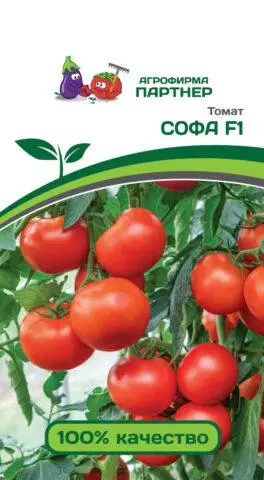
Sofa tomato seeds are produced by the only agricultural company that is the originator
Description of the variety of tomato Sofa F1
Sofa F1 is an early ripe tomato hybrid. Between the emergence of seedlings and the collection of the first fruits that have reached full ripeness, only 80-85 days pass.
Sofa tomato bushes are determinant, “squat”, with a powerful stem, relatively compact. The growth of the central shoot in them is limited by the height “given” by the breeder. In open ground, it is 0,9-1 m, in a greenhouse – 15-20 cm more. The foliage is of medium degree, the leaf plates are medium-sized, typical for tomatoes of the “carved” form.
Most of the tomatoes weigh 80-100g. Sofa F1 is a cross between cherry tomatoes and cocktail tomatoes in size. Occasionally come across larger specimens weighing 120-150 g. The skin is glossy, thin, but elastic and durable, rich red in color. The coloration is uniform, without a light spot at the stem.
The pulp is very juicy and tender, fine-grained on the cut, with a pronounced “tomato” aroma. The fruits have 3-4 seed chambers, there are very few seeds in them. They are small, almost imperceptible when eating.

Fruit shape – classic for tomatoes, rounded oblate
In terms of taste, Sofa tomatoes noticeably outperform many other varieties with early ripening. They are distinguished by a rich taste, in which both a pronounced sweetness and a light, “balancing” sourness are clearly distinguished. These tomatoes can be confused with mid-late or late-ripening varieties and hybrids; outstanding taste qualities are typical for such tomatoes.
Characteristics of tomato Sofa
Based on the description of the originating agricultural company, the Sofa tomato looks very promising. Reviews of gardeners confirm that this information is generally true.
Sofa tomato yield
During the season, 5-6 kg of fruits are removed from the Sofa tomato bush. Such indicators are provided by frequently formed fruit brushes. The first is laid over the 6-7th sheet, the next – with an “interval” of two sheets. Each bunch contains 5-6 tomatoes.
Subject to the planting scheme, 1-4 plants are placed per 5 m². Accordingly, an amateur gardener can count on a yield of at least 20 kg / m². These are the data of the originator, summer residents who already have experience in cultivating Sofa tomatoes claim that the indicators are a bit more modest – 3-3,5 kg per bush.
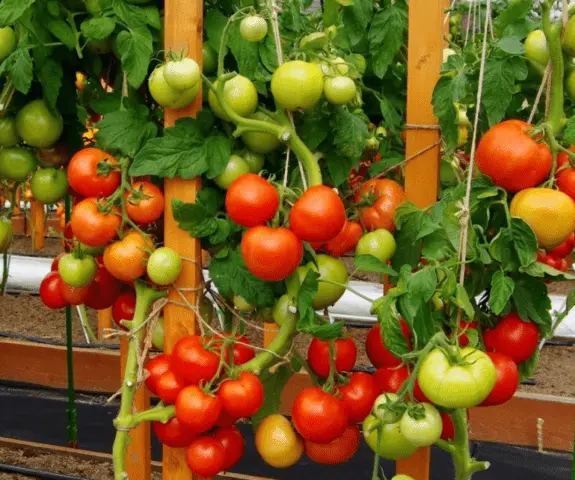
It is possible that the yield of the hybrid depends on the climate in the growing region and the weather during the summer.
Disease and pest resistance
The overall resistance to pathogens in the hybrid is not bad. The manufacturer in the description reports the presence of “innate” immunity to blossom end rot. Gardeners in the reviews mention individual cases of infection with Alternaria, Fusarium, and different types of mosaic virus.
Methods of Use
Due to their taste, tomatoes are quite suitable for salads and cuts of fresh vegetables, first and second courses. The density of the pulp allows you to cook tomato paste, ketchups, sauces, freeze and dry tomatoes. Their relatively small size allows them to be used for whole-fruit canning. When salting and pickling, Sofa tomatoes almost do not crack, the pulp retains texture, and the skin retains color brightness.
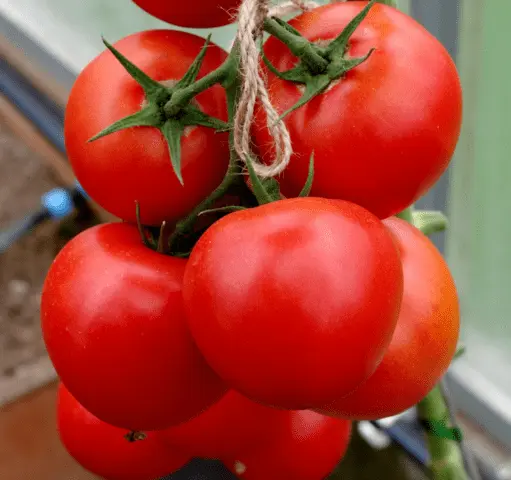
Appointment for tomatoes Sofa universal
Advantages and disadvantages
The advantages of the Sofa tomato hybrid immediately provided him with interest from gardeners who prefer to “test” new selections on their own beds:
- very early fruiting;
- mass, “friendly” ripening of tomatoes;
- high yield;
- “genetically built-in” immunity against blossom end rot and good overall resistance to pathogenic microflora;
- the possibility of cultivation in open and closed ground, in different climatic conditions;
- compactness of plants, allowing to compact plantings;
- no need to form bushes;
- strong skin, providing resistance to cracking of tomatoes, good keeping quality and transportability;
- “presentation” and one-dimensionality of tomatoes;
- excellent balanced taste;
- the versatility of the purpose of the fruit.
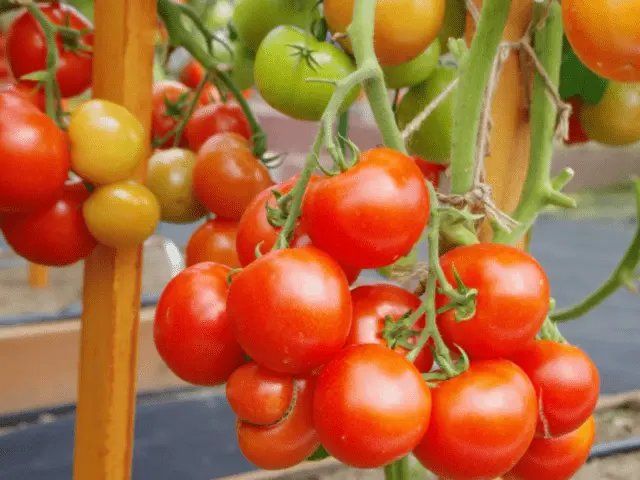
Sofa tomatoes immediately attract attention with their external presentability
Obvious shortcomings, based on the description of the originator, are absent in Sofa tomatoes. Gardeners in the reviews also do not mention significant disadvantages. The only thing that some of them do not like is the need to purchase seeds annually. In addition, the hybrid is completely new, so not all stores sell Sofa tomatoes.
Peculiarities of growing
The early ripening of the crop allows you to plant Sofa tomatoes with seeds immediately in open ground, but most gardeners still prefer the seedling method of growing. Seedlings that have reached a height of 12-15 cm and have 5-6 true leaves are ready for transplanting to the garden.
Sowing dates are determined by the local climate. In central Our Country, this is approximately the middle of March, in the south – the second half of February, in regions with a more severe climate – the very end of March or the first days of April.
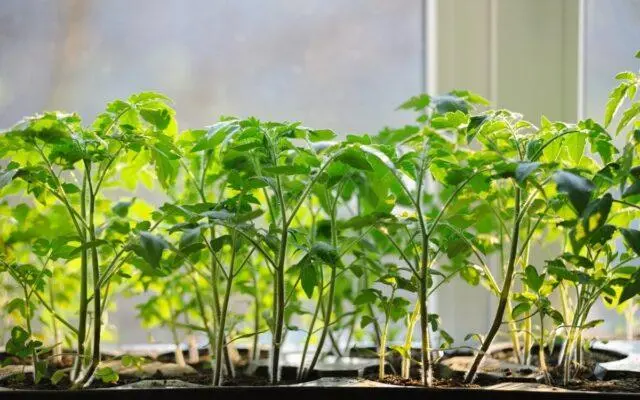
Seedlings reach the “specified” dimensions in 55-60 days from the moment of emergence of shoots from seeds (it takes a maximum of one and a half weeks)
Sofa tomato seeds are recommended to be planted immediately in separate containers, so that later they do not have to dive. It is best to use peat pots – seedlings can not be removed from them before planting in the ground.
For the beds choose an open, well-lit and sun-warmed place. The bushes and fruits of Sofa tomatoes do not suffer from its direct rays; they will also endure a short-term “drought”. Stagnant water at the roots is much more dangerous for them, so the substrate must be loose, “light”, but at the same time quite nutritious.
The interval between neighboring plants is 35-40 cm, between the rows of plantings – 40-45 cm. After planting, the plants are also watered, spending about 1 liter of water.
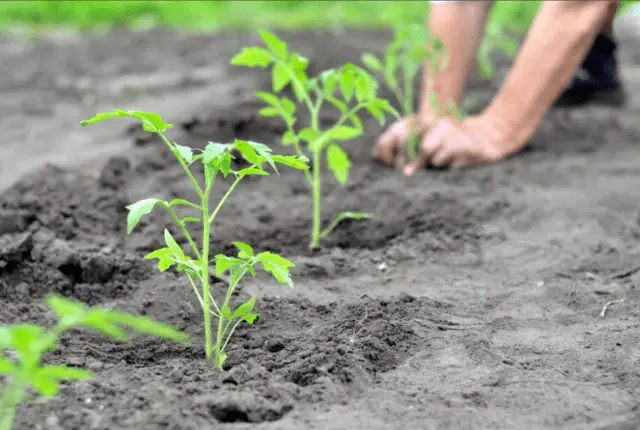
Sofa tomatoes are planted in well-spilled holes up to 12 cm deep.
Even an inexperienced gardener can care for these hybrid tomatoes. It includes:
- Watering. The soil is moistened often (every 2-3 days), but moderately, spending about 3 liters of water per bush. The surface layer of the substrate in the “breaks” should have time to dry. Of course, when growing in open ground, natural precipitation is also taken into account. The method of watering is not fundamental if it excludes the ingress of drops of water on the plants themselves.
- Application of fertilizers. Due to the high yield, Sofa tomatoes need regular feeding. When preparing the beds, humus and complex fertilizer containing the main essential macronutrients (nitrogen, potassium, phosphorus) are necessarily introduced into the soil in the spring. 1,5-2 weeks after planting, the bushes are watered with a solution of any mineral nitrogen fertilizer. Then, every 15-20 days, Sofa tomatoes are fed with “specialized” store-bought preparations for tomatoes or Solanaceae.
- Loosening and weeding. The bushes are loosened about once a week and very carefully. The root system of tomatoes Sofa is superficial. In the process, weeds are pulled out. The procedure is carried out the next day after watering. These activities can be abandoned if, immediately after planting, a bed with tomatoes is mulched.
- Pinching and garter. Sofa tomato bushes do not need targeted shaping, they turn into a standard “tree” with minimal help from a gardener. He is only required to remove stepchildren. The stems of the plants are quite powerful, but the fruit clusters are also massive. Therefore, for safety net, it is recommended to tie them up.
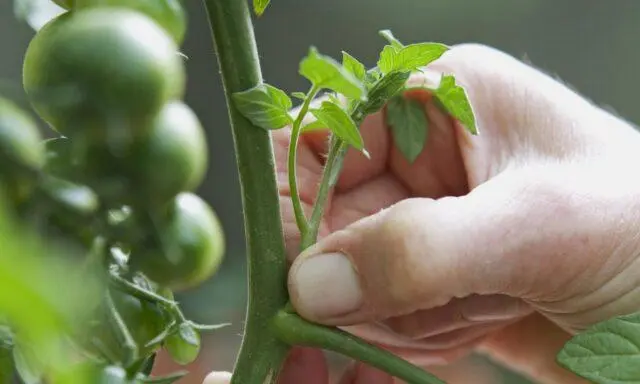
Particularly “dangerous” for the future harvest are stepchildren, which are located under the fruit brushes.
Pest and disease control
The resistance to pathogenic fungi in Sofa tomatoes is not bad, therefore, to prevent infections, it is enough to use competent agricultural technology, adherence to the scheme, and preplant seed treatment with fungicides. Before planting them on seedlings, they are pickled for 15-20 minutes in a solution of any copper-containing preparation.
During cultivation in open or closed ground, preventive treatments with the same fungicides at intervals of about once every two weeks are recommended if a conducive to “activation” and reproduction of pathogenic microflora is established for a long time. The solution is sprayed not only on the bushes themselves, but also on the soil in the beds.
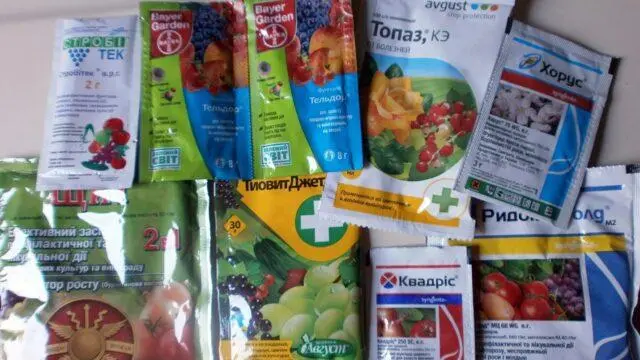
Fungicides effectively destroy any pathogenic fungi
Conclusion
Tomato Sofa F1 is a very promising tomato hybrid. Reviews from gardeners who have tried to grow a new product are mostly positive, the hybrid has not demonstrated any significant shortcomings. Tomato Sofa proved to be easy to care for, characterized by good immunity and excellent taste.









